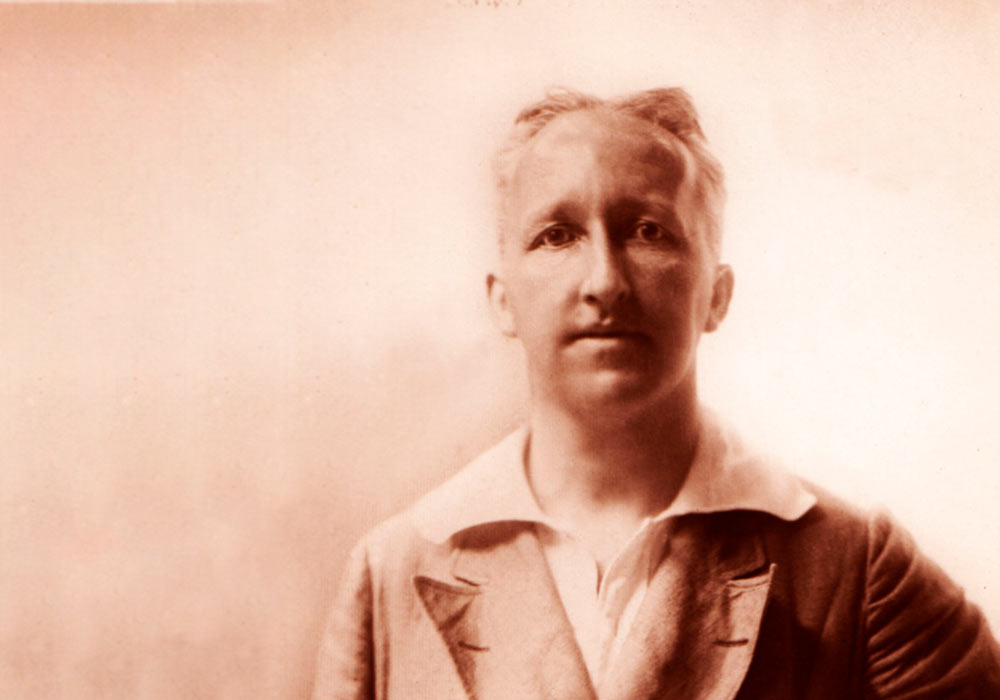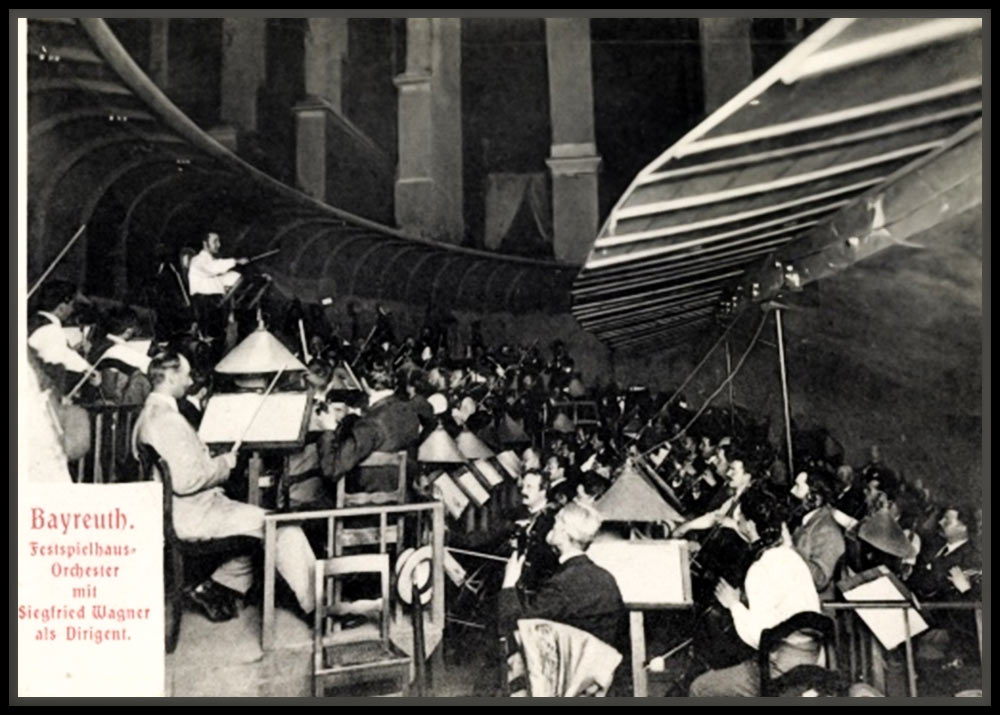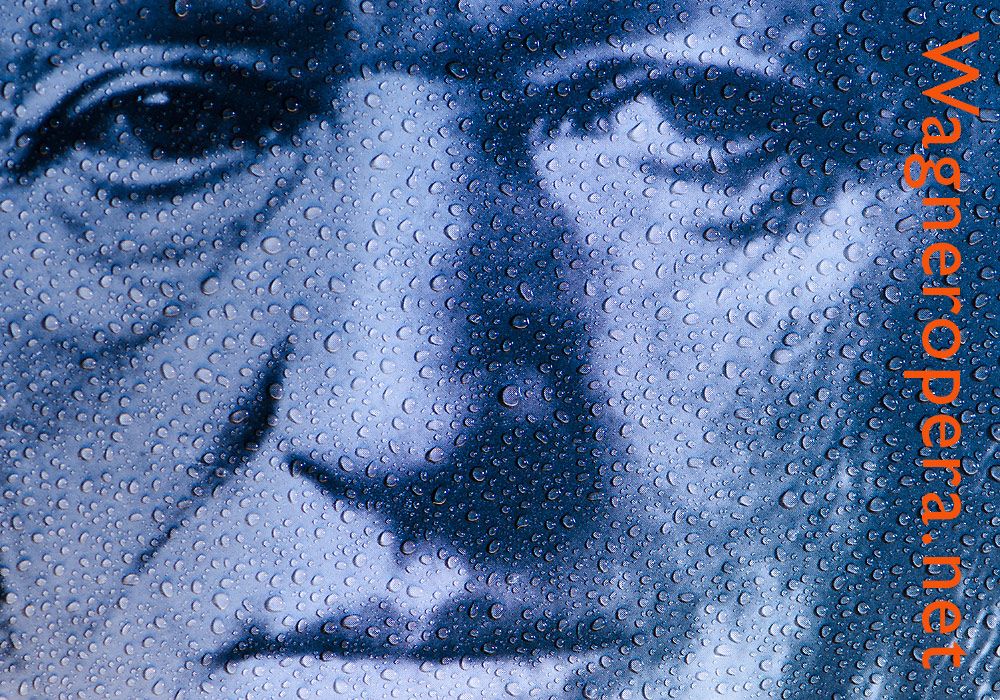Interview with Kevin Clarke: Siegfried Wagner's homosexuality and its influences on Wagner performance history and the Bayreuth Festival
Dr. Kevin Clarke is the curator of an exhibition on the life, and in particular the sexuality, of Siegfried Wagner that runs until 26th June 2017 at the Schwules Museum Berlin. I sent Dr. Clarke a few questions via email about Siegfried Wagner and what we can learn about his life and role in the performance of his father’s operas. Below are his unedited responses.

In what ways, if any, should Siegfried Wagner's sexuality be important to lovers of Richard Wagner's music dramas? Do you think Siegfried's sexuality had any effect on how he led the Bayreuth festival?
What a person desires – sexually or otherwise – always influences his or her view of the world. It also influences his or her choice of friends and collaborators. This was certainly the case with Siegfried Wagner who was a powerful theater director: he ran the Bayreuth Festival from 1906 to 1930, and many people, including Gustav Mahler and Richard Strauss, tried to get onto a good footing with him (and Cosima) because they wanted to conduct at Bayreuth, or sing there. So a lot of Wagner performance history of the early 20th century is deeply influenced by Siegfried and thus by his homosexuality.
Siegfried was aware of his power, he jokes about it in public interviews, and seems to have privately used his fame and position to seduce young men. So, in order to understand who was hired – and why – it’s important to have a little sexual background information. There are reports of Siegfried using the “casting couch” approach with many Wagnerian admirers: when they were nice to him he gave them jobs as interns, scenic designers (Kurt Söhnlein), rehearsal pianists (Walter Aign) and so forth. He also selected many soloists via his network of gay friends: most famously heldentenor Max Lorenz, whom he discovered at a private audition in Berlin in 1925 and with whom he immediately recorded the flower maiden scene from Parsifal; then there is baritone Herbert Janssen who was hired by Siegfried in 1930 as Wolfram for the fabled Tannhäuser production conducted by Toscanini. Both had legal trouble because of §175 [the former German law criminalising homosexuality] in later years, which is why we know about their homosexuality today. Sometimes Siegfried met men in bars and told them they should have stage careers, which in some cases they had, thanks to Siegfried’s help, oftentimes in Wagnerian roles. Whether these bars where gay bars is anyone’s guess. And whether his protégées were gay is also difficult to verify, unless they were prosecuted because of §175 .
There is a 1925 booklet entitled Eine Lüge um Bayreuth? which openly describes Siegfried trying to seduce a young – shocked – music lover in Wahnfried. There are reports of his tailor having sexual intercourse with Siegfried every time he came to measure him up for new suits. And there are letters to his lover Werner Franz in which he offers a position in Bayreuth to the young conductor in 1924. (They are the only love letters that have not been locked away because they only started circulating in the early 2000s. We show them, for the first time ever, in our exhibition, together with Eine Lüge um Bayreuth? and all other relevant documents.)
Siegfried was also very friendly with lesbian artists: his two personal assistants for nearly 25 years, Luise Reuss-Belce and Evelyn Faltis, were a lesbian couple. Reuss-Belce had been a former soprano at the Bayreuth Festival. And Frida Leider, who Siegfried hired in 1927 as Kundry, had close contact with lesbian circles surrounding Alban Berg’s lesbian sister, Smaragda von Eger-Berg. She might have arrived at Bayreuth that way.
Then there is Franz Stassen, the famous painter and illustrator, who was one of Siegfried’s closest gay friends and later the teacher of Wieland Wagner whom he strongly influenced in his artistic development. Possibly also in his sexual development. Anja Silja mentions in a TV interview that Wieland was always afraid he might turn gay too. As if something like that could just “happen.”
You ask why it is important to know all of this for lovers of Richard Wagner’s music. First of all, if these music lovers are homosexual themselves, it might be important for them to see “their” LGBT history represented in the history of Bayreuth on such an important level, and over such a long period of time, reaching back to the 1880s when Richard Wagner already had his gay friends around, like Paul von Joukowsky. You will recall, Joukowsky designed the sets for the world premiere of Parsifal. Joukowsky and his Italian lover Pepino took 5 year old Siegfried on holiday with them, and the parents were perfectly happy with this. It seems Richard never had anything negative to say about homosexuals, which is surprising, considering how many nasty things he had to say about so many other groups. Prof. Michael Zywietz from Bremen University gave a lecture at the Schwules Museum* on this same time ago.
All others, i.e. heterosexual lovers of Wagner’s music, might simply acknowledge that there is an important homosexual side to Bayreuth, and also acknowledge that “such things” did not start there recently, in the wake of the sexual revolution of the 1970s, but are actually part of the DNA of the festival. Possibly, they are even part of the DNA of Richard Wagner. Books about the special appeal his operas have for homosexual men started in 1873 when Dr. Th. Puschmann published Richard Wagner: A Psychiatric Study, in which he argues that the composer was “mentally not normal” because of his interest in “love between men.” In Bayreuth and Homosexuality (1895), Oskar Panizza describes Parsifal as “compensatory satisfaction for paederasts.” Italian criminologist Cesare Lombroso calls Wagner “un psicopatico sessuale” (“a sexual psychopath”) in Genio e degenerazione (Genuis and Degeneration, 1897). Thomas Mann was a later gay Wagnerian, whose Death in Venice (1912) was inspired by Wagner’s own death in Venice. And let’s not even start talking about Ludwig II, godfather of Siegfried, and Friedrich Nietzsche.
On a political level: the fact that Siegfried had to hide his sexual orientation by marrying Winifred Marjorie Williams-Klindworth in 1915, after journalist Maximilian Harden threatened to ‘out’ him, was deeply influential for the history of the Bayreuth Festival after 1933, and thus for the problematic reputation of Richard Wagner’s oeuvre.
Just before he passed away Siegfried produced a new Tannhäuser at Bayreuth that I believe attracted some controversy at the time. I actually think a production of this opera in which the title character is gay could be really interesting, and perhaps effectively explore attitudes towards homosexuality in the context of such things as male and female friendships, and conservative or liberal societies. Do you think Siegfried thought of the opera in this way at all, that perhaps the Venusberg represented a society where he wouldn't need to care what others thought of his sexuality?
Tannhäuser was Siegfried’s favourite opera, and he wanted to produce it long before 1930. Only, he never had enough money until Winifred managed to start a big collection and gave him the necessary funds as a gift in 1929, for this 60th birthday. Tannhäuser has always been interpreted by gay men as a metaphor of their own lives. Tannhäuser, as the story of a man torn between the sensual frenzy of the Venusberg and the chaste world of Christian knighthood, is discussed by Oscar Wilde in The Picture of Dorian Gray (1890/91). So it’s no big surprise to see Siegfried drawn to it, too. He created a special ‘pink’ light design for the Venusberg, he hired Rudolf von Laban as a choreographer and made him insert homoerotic elements into the bacchanal. Which infuriated conservative right-wing Wagnerians. He hired a gay singer as Wolfram and for the title role (Sigismund Pilinszky). And he had his gay friend Kurt Söhnlein do the set designs. As it turned out: this daring production was Siegfried’s greatest triumph as festival director. It was also one of the most famous productions in the history of the Bayreuth Festival. The cast made a recording in 1930, alas without Toscanini. But you can still hear what Siegfried’s ideal Tannhäuser ensemble sounded like.
I must confess to not really knowing anything about Siegfried's own works. What sort of things inspired his own operas, and are the pieces in your view worth staging? Are there any plans you know of to have any staged in Germany or elsewhere soon?
According to Siegfried’s biographer Peter P. Pachl, Siegfried Wagner’s operas can be read as giant autobiographies. They are the scarce intimate expressions of a man who otherwise kept silent about his private feelings, for fear of being blackmailed or prosecuted because of §175. In Sonnenflammen (1912), set against the backdrop of antique Byzantium, the autobiographical motifs are especially clear: you have a hero called Fridolin as Siegfried’s alter ego. He’s a doomed crusader from Franken, cursed by his powerful father. In the opera, the knight Gottfried warns Fridolin about the temptations of the city of Byzantium, where he he’s been living for years, instead of following his father’s orders to join the crusaders on their way Palestine: “Many have gotten stuck here in the luscious swamp / right down to their last stub! Pooh, I don’t like it.” In the end, the degenerate Fridolin throws himself into the flames of Byzantium burning to the ground and cleans himself of his sins. Evidence of the homoerotic desires of Siegfried can also be found in Friedensengel (1914). Reinhold sings in the 2nd act: “To have the pleasure once/ of the love and kiss of a peasant boy / Yes, that would be paradise!” Mita replies to this, horrified: “But Reinhold! What are you saying!”
These operas were regularly performed in the early 20th century, e.g. by Gustav Mahler at the Vienna Court Opera. In the 1920s they were misused by right-wing circles as an example of “Germanic contemporary” music as opposed to the degenerate “modern” and “Jewish” music of the avant-garde. Today, many conductors and theater directors don’t know Siegfried’s dramatic works at all, even though nearly all of them are available on CD. The Wagner family has hidden Siegfried’s life and works from sight after 1945, so it’s not really surprising that many people believe there is nothing worth discovering. Which is certainly not the case, I would say!
What was Siegfried's relationship with national socialism, and how did he fit in politically with such people as Winifred, Chamberlain and Hitler?
Because he feared for the reputation of the Festspiele and the absence of foreign visitors, Siegfried avoided public closeness to the Nazis party after 1924: he didn’t join the NSDAP and promised that “the festival will remain free from political influence.” At the same time, Siegfried, as director of the festival, did not prevent the publication of extremely right-wing articles in the official festival guide of 1924: “Foreigners, especially the racially less northern types, have no real connection with the art of Richard Wagner—at least not the real Bayreuth connection.”
Conductor Kurt Singer described the new Bayreuth-clientele after 1924: “The stalls are filled with festively dressed guests in tails and evening gowns, nationalistic and conservative right down to their swastikas, cheering uncritically. […]. This is not the audience Richard Wagner wished for. No more than ten non-Aryans attending.” After a performance of Meistersinger von Nürnberg in 1924, the audience started singing the national anthem. Siegfried was shocked and distributed notes saying “This is about art!” Many Wagneriansturned their back on Bayreuth. Thomas Mann wrote in 1924: “Bayreuth, as it presents itself today, doesn’t appeal to me at all, and I have to think it won’t appeal to the rest of the world either.” Mann blamed Bayreuth for misusing Wagner for a “cave-bear-like German ideology.”
The biographer of Siegfried Wagner, Peter P. Pachl, and the International Siegfried Wagner Organization see Siegfried’s relationship to National Socialism completely differently. According to them, there were never more ‘Jewish’ artists at the Bayreuth festival than under Siegfried, ‘neither before nor after’. They refer to Siegfried’s public statements in the press, and they claim the 1929 libretto for Das Flüchlein, das Jeder mitbekam (“A Play from Our Fairy World”) is a ‘clear dissociation from Hitler’. Obviously, the many quoted letters and statements by Siegfried in Brigitte Hamann’s biography of Winifred Wagner speak a different language.
Why do you think Siegfried's relatives have not released his correspondences to the public? What answers would you like it to provide regarding his life, if you could read it?
One can only speculate. After WW2, Winifred made herself to sole “culprit” for the Nazi disaster, which in turn cleared the path for her sons Wieland and Wolfgang to re-start the festival as the politically innocent young next generation. To this day, most discussions on the fatal years 1933-45 focus on Winifred, who was a woman from England, married into to Wagner family. She’s the outside who brought political disgrace to Bayreuth. But could it be that all of this was a clever maneuver by Winifred and her sons? Taking the blame as the foreign daughter-in-law, Winifred steered the Nazi controversy away from Siegfried, the master’s own son who was just as enthusiastic about Hitler and the right-wing movement in the 1920s. We should not forget that Hitler and the Nazis came to Wahnfried long before 1933: Siegfried had the later “Führer” over for breakfast as early as 1923 and wrote glowing accounts of Hitler to many friends.
In a way, Wieland and Wolfgang put all the blame on Winifred, who played along. To have Siegfried and the rest of the family drawn into a Nazi discussion would have been highly problematic back in the 1950s and 60s. I guess this is one reason why Winifred and later Wolfgang kept Siegfried out of the limelight: they opposed any kind of memorial activity, any performances of Siegfried’s work, anything that might have inspired someone to take a closer look at Siegfried’s life and that of the Wagner family in the 1920s. Obviously Winifred was opposed to Peter P. Pachl starting a Siegfried Wagner society in the 1970s, and Wolfgang was later opposed to Pachl writing an expansive biography. (Which he dedicated to Wolfgang Wagner and his opposition, claiming that opposition pointed the way for him.)
If that famed family safe were ever to be opened, what would I hope to find? I’d be most interested in any personal (love) letters between Siegfried and his various male friends: Clement Harris, Franz Stassen et al. I’d like to know how open or not-open Siegfried was about his sexuality, how much he reflected on his situation, and also if there are any accounts of his relationship with Winifred – how much did he confess to her, how much did she know, what kind of agreements did they have, how did the rest of the family deal with the open secret of Siegfried’s homosexual affairs? Also, the rumored blackmail letters would be a great help in reconstructing Siegfried’s private life.
Who knows, we might also learn a lot about the political situation in the Weimar Republic, but also the years before. After all, the Wagner family and Siegfried had close links with Emperor Wilhelm II and his gay circle of advisors, namely Philipp Fürst zu Eulenburg-Hertefeld who secured funding for Bayreuth and who was later involved in the famous Eulenburg scandal.

Siegfried Wagner conducting the Bayreuth Festival Orchestra.
How would you sum up Siegfried's role in the development of Wagner conducting and performance?
What I find most surprising in Siegfried’s Wagner recordings is the casual and natural style of singing and orchestral playing – no bombast, no overwhelming grandness. It’s almost as if Siegfried prefigured conductors such as Clemens Krauss or Pierre Boulez by 100 years. The two full cast recordings from Siegfried’s Bayreuth – Tristan and Tannhäuser – present singers who are almost conversational. They never put pressure on their voices, they have crystal clear diction, and they sound vocally young and expressive. It’s an ideal that seems to be lost in many later Wagner recordings and performances which are often only about maximum volume, without tonal beauty.
I have always wondered why so many of the conductors from the Period Instrument Movement who have tried to “slim down” the Wagner sound have not referenced Siegfried’s Wagner recordings, which must at least partially represent what Richard Wagner wanted in terms of style and casting.
With his conversational “bel canto” approach to Wagner, Siegfried is far more modern than many give him credit today, and it would be worth including his recordings more in any historical analysis of the Wagnerian style. Siegfried brought Fritz Busch and Arturo Toscanini to Bayreuth, not Hans Knappertsbusch. I assume he found Busch and Toscanini closer to his personal Wagnerian ideal, and they, too, represent a style that would be worth rediscovering. It’s in total opposition to the Knappertsbusch and Thielemann approach of later years.
Exhibition 17 February 2017 - 26 June 2017.
Siegfried Wagner: Bayreuth’s 'Fairy' Crown Prince, Schwules Museum
Sam Goodyear
Sam Goodyear is an opera fan and Wagner enthusiast, originally from Portsmouth but now living in Germany. He read history at Peterhouse, Cambridge, and has at various times worked as a bookie, translator, trader, journalist, and TV researcher. He currently works in socially responsible investment. While very much an amateur, his interest in music has in the past led to him singing on BBC radio, and playing the trumpet in front of the queen. He attends as much Wagner both at home and abroad as time and money will permit, and he has written on Wagner for Classical Music Magazine.



